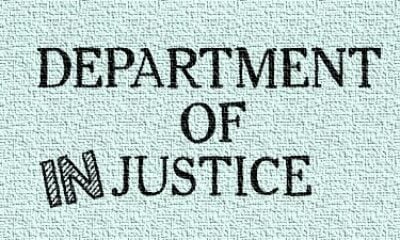Thank goodness that organizations today increasingly recognize the importance of supporting employees’ well-being while maintaining productivity. As such, the corporate quest for work-life balance, harmony, and integration has gained great prominence.
Key Aspects
Here are 12 key aspects of this pursuit gleaned from a variety of programs:
1. Offer Flexible Work Arrangements: Offering flexible work schedules, remote work options, and part-time opportunities allows employees to better balance their professional and personal lives.
2. Have Clear Policies: Establishing clear policies and guidelines regarding work hours, overtime, and expectations helps employees manage their time effectively.
3. Support Mental Health: Providing access to mental health resources, counseling, and stress management programs can address employees’ emotional well-being.
4. Give Leave: Offering generous paid time off, including vacation, sick leave, and parental leave, allows employees to address personal and family needs without fear of repercussions.
5. Prevent Burnout: Encouraging employees to disconnect from work-related technology after hours helps prevent burnout and supports work-life separation.
6. Support Workload Management: Ensuring that employees have manageable workloads and realistic deadlines prevents excessive stress and long working hours.
7. Provide Wellness Programs: Implementing wellness initiatives, such as fitness facilities, nutrition programs, and health screenings, promotes a healthier work-life balance.
8. Enable Employee Assistance Programs: Such programs provide confidential counseling and support services for employees facing personal challenges.
9. Promote a Culture of Balance: Company culture plays a significant role in work-life balance. Leaders should model a balanced lifestyle, and the organization should celebrate accomplishments beyond work.
10. Maintain Continuous Communication: Engaging in open dialogues with employees about their needs and concerns regarding work-life balance fosters a supportive and responsive corporate culture.
11. Empower Workers with Training and Education: Providing training on time management, stress reduction, and resilience equips employees with the skills to better balance their lives.
12. Leverage Remote Work Policies: Crafting clear remote work policies and expectations ensures that remote employees have a structured work-life balance.
Bringing in the Hired Gun
As the world’s only holder of the title, “The Work-Life Balance Expert®,” as issued by the USPTO, I am often summoned by organizations to enhance work-life balance for their troops. In all, I’ve delivered programs and spoken to 960 groups. Below depicts an encounter with a company who shall remain nameless for reasons of confidentiality. See if this squares up with your experience in your organization.
The following responses were derived as a result of my sending a questionnaire to the conference meeting planner where I was to be their keynote speaker. I requested the names of 10 people who would be in the audience. I called each of them to discuss their current challenges. Here are their actual replies to three of my questions:
1) If you could magically resolve a work-life balance issue, what would it be?
* Have more breathing room between high-level projects.
* Accomplish more during the workday and leave mentally free.
* Hire more staff!
* Take vacations and time off with no big pile ups when returning.
* Be allowed to take some Fridays off and catch up on much needed appointments.
* Reduce the number of pop-up requests and questions flying at me all day long so that I could ACTUALLY do what I need to do each day.
* Be approved to work from home or adjust my hours. My personal time isn’t respected.
2) What do you seek to derive from attending a session such as mine?
* Manage my time more effectively.
* Gain tools to embrace life while living it
* Develop stronger skills.
* Make work-life balance a reality in our company’s work-first culture.
* Acquire strategies, tips, or ideas to re-think my approach.
* Learn to change my focus, to be more productive, balanced, and focused.
* Be able to balance the few things that I do control during my day.
* Discover tips for keeping my staff in balance.
* Gain a realistic expectation of what we can achieve or experience.
* Develop a more positive outlook for the group.
3) Are there any observations you could offer?
* Work-life balance is a huge topic organization-wide. We are high performers who want to do a good job. We compromise our personal lives to meet work demands. We have to keep pace with the leaders and teams we support. If we don’t, we’ll be deemed unresponsive.
* A frenetic pace seems to be inherent in this company. Our team does a good job of emphasizing work-life balance; the problem lies with the surrounding divisions that thrive on working all the time, for no good reason. Yes, we are in a global space, working in different time zones, but some of these people are beyond the pale.
* What I love about this organization are the people. They are dedicated to the cause and truly want to deliver reliable, affordable, dynamic, and versatile solutions to our customers. However, our frenetic pace isn’t necessary. Not every project is the most vital. Not every problem is an emergency. Not every request has to be filled now.
* If in charge, I’d implement a more efficient, logical pace organization-wide. If we all took a breath and reevaluated how we work, in a more focused environment, we might find that we could produce better results with less stress.
Resonates Strongly
As you can see, the topic of work-life balance resonates strongly among today’s career professionals. Going forward, may more organization recognize and acknowledge the critical role that employee wellness and work-life balance has on the organization’s overall effectiveness.
– – – – –














